12 Best Database Design Tool Shortlist
After a thorough evaluation, I've handpicked 12 top-notch database design tools that I believe are perfect solutions to your data management challenges.
- MySQL Workbench - Best for comprehensive database design and administration
- pgModeler - Best for PostgreSQL database modeling
- dbForge Studio - Best for database development, management, and administration
- Navicat - Best for versatile database management and development
- DBeaver - Best for universal database tool with open-source features
- DbSchema - Best for visual database design and management
- Lucidchart - Best for collaborative database diagram creation
- Sparx Systems Enterprise Architect - Best for complex database and software modeling
- Aqua Data Studio - Best for multi-database query and analysis
- Toad Data Modeler - Best for simplifying database design, maintenance, and documentation
- Vertabelo - Best for online database model design
- DbDesigner - Best for easy online database schema design and modeling
As someone who's spent considerable time working with diagram tools and entity relationship programs, I understand how crucial it is to have the right Database Design Tool at your disposal.
These tools, an integral part of database management systems, assist in creating and managing foreign keys, indexes, and flowcharts that are essential for the efficient organization and retrieval of data. Their compatibility with different operating systems further adds to their versatility.
Having the right tool can simplify the database design process, saving you hours of manual labor. It can turn a complex task into a manageable one by automating tasks like creating relationships between entities and establishing the proper indexes. The main pain point it solves is the challenge of visualizing and creating complex database structures, making it an indispensable resource in any data-intensive project.
What is a Database Design Tool?
A Database Design Tool is a specialized software application used by data architects, developers, and administrators to create, analyze, and maintain data models. These models serve as blueprints for designing databases and consist of schemas, tables, relationships, and other elements that define how data is stored and accessed.
Professionals use these tools for various purposes, such as ensuring data consistency, improving database performance, and complying with business rules and regulatory requirements. A well-designed database supports efficient data management and drives insightful decision-making, making these tools essential in sectors like finance, healthcare, technology, and more.
Overviews of the 12 Best Database Design Tools
1. MySQL Workbench - Best for comprehensive database design and administration
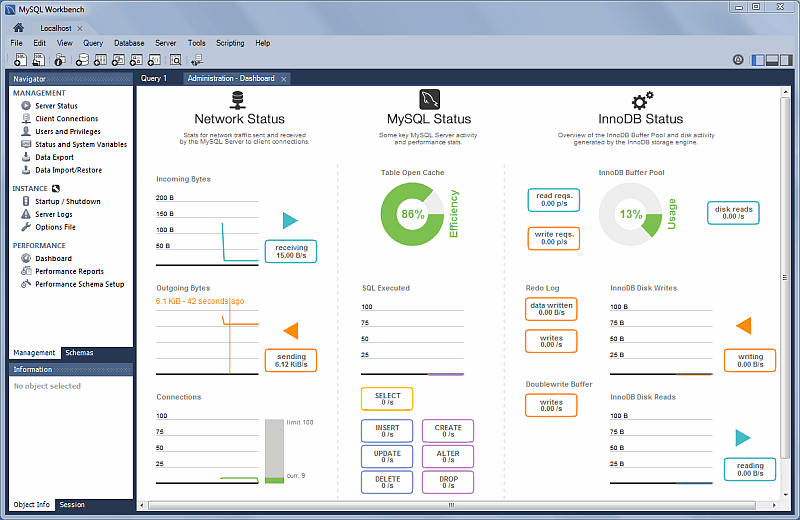
MySQL Workbench is a unified visual tool that provides an integrated development environment for database administrators, developers, and data architects to design, create and manage MySQL databases.
Its feature-rich platform makes it stand out as a comprehensive database design and administration solution, offering a range of functionalities from server configuration and user administration to robust data modeling capabilities, solidifying its position as the top choice for comprehensive database design and administration.
Why I Picked MySQL Workbench:
MySQL Workbench is a unified visual tool that provides an environment for database administrators, developers, and data architects. The comprehensive feature set of this tool led me to choose it for this list. It provides robust data modeling and administration features, allowing users to design, generate, and manage all MySQL databases efficiently. Its functionality stands apart, especially in providing a comprehensive database design and administration environment, making it my top pick for these uses.
Standout features & integrations:
MySQL Workbench boasts a robust SQL development environment and comprehensive administration tools for server configuration, user administration, and much more. Data modeling capabilities, including reverse engineering and forward engineering, are also key features. The tool supports integration with scripting languages such as Python and Lua, and it can also import databases from Microsoft SQL Server, PostgreSQL, Sybase ASE, SQLite, and others.
Pricing:
MySQL Workbench pricing starts from free as it is an open-source tool.
Pros:
- Robust SQL development environment
- Comprehensive database design and administration features
- Supports integration with multiple databases and scripting languages
Cons:
- The interface can be complex for beginners
- Lacks some advanced features found in commercial tools
- Limited support and updates as it is an open-source tool
2. pgModeler - Best for PostgreSQL database modeling

pgModeler is an open-source tool specifically designed for modeling PostgreSQL databases. Its commitment to aligning with the specific features and nuances of PostgreSQL has earned it the reputation of being the top choice for PostgreSQL database modeling.
Why I Picked pgModeler:
pgModeler caught my attention due to its specialization in PostgreSQL databases. I selected it for its niche focus on PostgreSQL, setting it apart from other more generalized tools. It respects the unique characteristics of PostgreSQL, accommodating its specificities in database modeling. Therefore, it stands as the best tool for PostgreSQL database modeling, offering a tailored approach to cater to PostgreSQL users.
Standout features & integrations:
pgModeler has features like reverse engineering, which can import an existing database and create a visual model. It can validate models to find errors or perform automatic fixes. Its auto-update functionality updates the database model in real time as you make changes. pgModeler integrates well with PostgreSQL, allowing direct database management from within the tool, and also supports the import of database schemas from SQL scripts.
Pricing:
pgModeler's pricing starts from $9.99/user/month (billed annually).
Pros:
- Tailored specifically for PostgreSQL databases
- Offers a range of robust database modeling features
- Real-time auto-update functionality
Cons:
- Limited to PostgreSQL databases
- The interface might be overwhelming for beginners
- Support might be less comprehensive compared to commercial tools
3. dbForge Studio - Best for database development, management, and administration
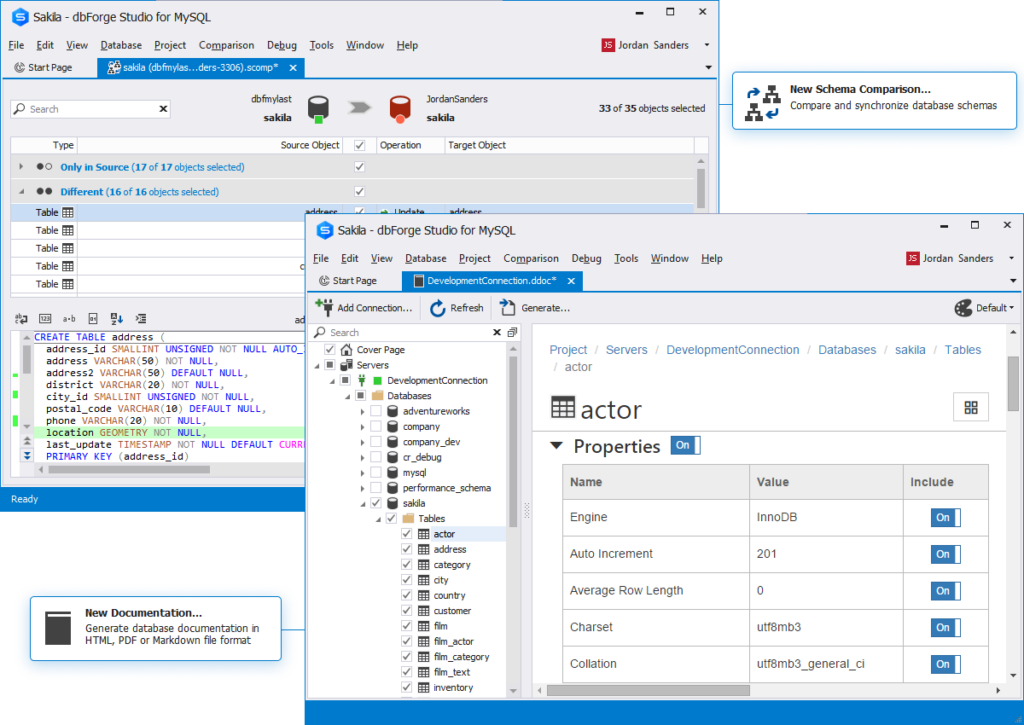
dbForge Studio is a powerful integrated development environment (IDE) that offers a comprehensive solution for SQL database development, management, and administration. With its extensive set of features and functionalities, it stands as an excellent choice for professionals seeking to handle all aspects of their database needs within a single tool.
Why I Picked dbForge Studio:
dbForge Studio was a clear choice due to its all-encompassing nature. It handles all aspects of SQL databases, from development to management and administration, providing a one-stop-shop for database professionals. This tool stands out with its broad scope of functionalities and the ability to provide extensive support for SQL database projects, which makes it the best pick for database development, management, and administration.
Standout features & integrations:
dbForge Studio is equipped with features for SQL coding, editing, profiling, and debugging. It has a visual database designer, a data report builder, and a query builder. Its schema and data synchronization features are particularly valuable for management and administration. dbForge Studio supports integration with version control systems like Git, SVN, and TFS. It also integrates with Visual Studio and supports connectivity with SQL Server, MySQL, MariaDB, Oracle, and PostgreSQL.
Pricing:
Pricing for dbForge Studio starts from $20/user/month (billed annually).
Pros:
- Comprehensive solution for SQL database needs
- Wide array of functionalities for development, management, and administration
- Supports integration with popular version control systems and databases
Cons:
- Has a learning curve for beginners
- Could be overwhelming due to the multitude of features
- Higher tiers can be pricey for small teams or individuals
4. Navicat - Best for versatile database management and development

Navicat is a full-featured database design and management tool that provides a broad range of functionalities for various database systems. Its versatility in supporting multiple database systems and robust feature set make it an excellent choice for multi-environment database management and development.
Why I Picked Navicat:
I selected Navicat for its versatility and broad applicability. Not every tool can handle different database systems effectively, but Navicat does this easily. Its flexibility makes it stand out from the crowd, hence making it the best for versatile database management and development.
Standout features & integrations:
Navicat brings a robust range of features to the table. It offers advanced data modeling tools, a powerful SQL editor, and sophisticated database design and management features. Additionally, Navicat's data synchronization and backup features are notable. It supports multiple database systems like MySQL, MariaDB, MongoDB, Oracle, PostgreSQL, SQLite, and SQL Server.
Pricing:
Pricing for Navicat starts from $20/user/month (billed annually).
Pros:
- Supports a wide range of database systems
- Robust data modeling and SQL editing features
- Great for versatile database management and development
Cons:
- Can be overwhelming for beginners
- Premium features come at a higher cost
- Learning curve for mastering all features
5. DBeaver - Best universal database tool with open-source features
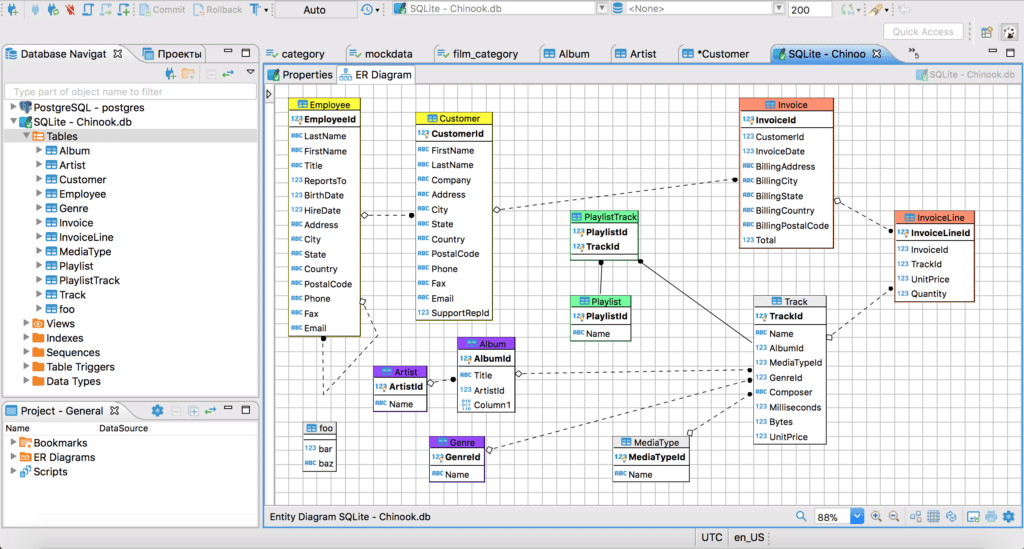
DBeaver is a comprehensive open-source multi-platform database tool that caters to developers, SQL programmers, and database administrators. It shines in its universality, providing support for all popular databases, which aligns with its standing as the best universal database tool with open-source features.
Why I Picked DBeaver:
I chose DBeaver for its universal application and the generous features provided by its open-source model. The universality makes it a fit for any database system, while its open-source nature ensures continuous improvements and additions. These factors collectively contribute to its title as the best for universal database tool with open-source features.
Standout features & integrations:
DBeaver excels in its functionality, with robust data editing, SQL script automation, and ER diagram generation among its core features. It also provides significant data format support for CSV, JSON, and Excel. The tool integrates with all popular databases, including MySQL, PostgreSQL, MariaDB, SQLite, Oracle, DB2, SQL Server, Sybase, MS Access, Teradata, Firebird, Derby, and more.
Pricing:
DBeaver is an open-source tool, but they also offer an enterprise edition. The pricing for the Enterprise version starts from $20/user/month (billed annually).
Pros:
- Supports all popular databases
- Open-source with robust features
- Extensive data format support
Cons:
- Interface can be complex for beginners
- Enterprise version needed for advanced features
- Support mostly community-based, may not be prompt
6. DbSchema - Best for visual database design and management

DbSchema is an intuitive tool for designing, managing, and documenting databases in a visual environment. Its ability to create and explore diagrams on multiple databases makes it the best tool for visual database design and management.
Why I Picked DbSchema:
I selected DbSchema because of its distinct visual approach to database design and management. The interactive diagrams, relational data explorer, and visual query builder all contribute to its uniqueness. This tool stands out as the best for visual database design and management because it brings an unparalleled level of visibility and comprehensibility to database design and management tasks.
Standout features & integrations:
DbSchema provides a visual design interface with interactive diagrams, schema synchronization, a relational data explorer, and a visual query builder. Its most important integrations include compatibility with all relational and NoSQL databases, such as MySql, PostgreSQL, SQL Server, Oracle, MongoDB, Redshift, and many others.
Pricing:
Pricing for DbSchema starts at $15/user/month. This is based on an annual license with optional renewal.
Pros:
- Visual interface for comprehensive database design and management
- Compatibility with all relational and NoSQL databases
- Schema synchronization capabilities
Cons:
- Pricing is based on an annual license, not a monthly subscription
- Advanced features may require a learning curve for new users
- Lack of a free version for extended usage
7. Lucidchart - Best for collaborative database diagram creation
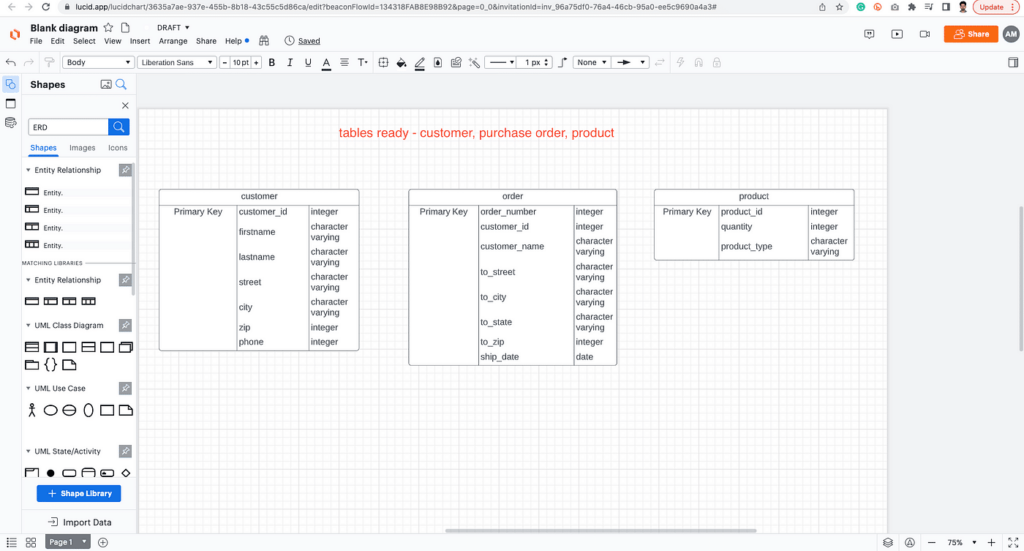
Lucidchart is a web-based diagram software built to facilitate collaboration on ideas, information, and processes. The software is designed to allow multiple users to work on the same project simultaneously, making it ideal for collaborative database diagram creation.
Why I Picked Lucidchart:
I chose Lucidchart for this list due to its strong focus on collaboration, as well as its intuitive and user-friendly interface. Its real-time collaboration feature differentiates it from other tools, enabling teams to work together on database diagram creation. This collaborative aspect of Lucidchart makes it the best tool for teams needing to work together on database diagrams.
Standout features & integrations:
Key features of Lucidchart include real-time collaboration, data linking, easy sharing options, and a variety of templates to get started. It also integrates well with popular applications such as Google Drive, Microsoft Office, Atlassian, Slack, and GitHub, to name a few.
Pricing:
Pricing for Lucidchart begins at $7.95/user/month (billed annually).
Pros:
- Real-time collaboration capabilities
- Integrations with popular applications
- User-friendly interface
Cons:
- Limited functionalities in the free version
- Higher learning curve for advanced features
- Pricing structure is based on an annual commitment
8. Sparx Systems Enterprise Architect - Best for complex database and software modeling

Sparx Systems Enterprise Architect is a comprehensive software platform that provides robust modeling and design capabilities. This tool supports the management, traceability, and planning needs of systems and enterprise architects, which makes it perfect for complex database and software modeling tasks.
Why I Picked Sparx Systems Enterprise Architect:
I selected Sparx Systems Enterprise Architect for its wide-ranging capabilities in handling complex modeling tasks. It distinguishes itself with advanced modeling and design features that support high-level architectural needs. Given its comprehensive toolset and scalability, I judged it to be the best tool for complex database and software modeling.
Standout features & integrations:
Sparx Systems Enterprise Architect boasts an array of useful features such as UML and BPMN modeling, database engineering, software development, and systems engineering. It also integrates well with other tools like MS Office, enabling seamless data exchange and collaboration.
Pricing:
The starting price for Sparx Systems Enterprise Architect is around $135/user (one-time fee).
Pros:
- Comprehensive modeling and design capabilities
- Scalable for use in large organizations
- Good integrations with other software tools
Cons:
- Higher learning curve due to complex functionalities
- Expensive for small teams or individual users
- The user interface could be more modern and intuitive
9. Aqua Data Studio - Best for multi-database query and analysis

Aqua Data Studio is a database-integrated development environment that enables developers to design, administer, and automate databases. It offers advanced SQL querying and analysis over a broad range of databases, making it an excellent choice for multi-database query and analysis tasks.
Why I Picked Aqua Data Studio:
In the process of selecting this tool, I found Aqua Data Studio to have a versatile range of capabilities for database administration. Its standout feature is the ability to perform SQL queries and analysis across multiple databases. In light of these attributes, I determined Aqua Data Studio to be the best tool for multi-database query and analysis.
Standout features & integrations:
Key features of Aqua Data Studio include an advanced SQL editor, database administration, and data visualization tools. It also provides useful integrations with a wide range of databases, including MySQL, Oracle, PostgreSQL, and SQL Server, to name a few.
Pricing:
Aqua Data Studio pricing starts from $499/user/year (billed annually).
Pros:
- Supports a wide range of databases
- Advanced SQL query and analysis capabilities
- Includes data visualization tools
Cons:
- High starting price may deter small businesses
- The interface could be more intuitive
- Learning curve for non-technical users
10. Toad Data Modeler - Best for simplifying database design, maintenance, and documentation

Toad Data Modeler is a software tool that provides a straightforward and efficient way to construct detailed data models. It facilitates simplification of database design, maintenance, and documentation, making it an ideal tool for managing complex databases with ease.
Why I Picked Toad Data Modeler:
I chose Toad Data Modeler due to its comprehensive functionality in creating, maintaining, and documenting database designs. It offers advanced features in an intuitive interface that distinguishes it from other tools. Given its capabilities, I judged it to be the best tool for simplifying database design, maintenance, and documentation.
Standout features & integrations:
Toad Data Modeler's notable features include reverse engineering, model comparisons, and synchronization with existing databases. It provides effective integrations with a variety of databases, such as Oracle, Microsoft SQL Server, MySQL, and IBM DB2.
Pricing:
Toad Data Modeler pricing begins at $492/user/year (billed annually).
Pros:
- Allows reverse engineering of databases
- Intuitive user interface simplifies database design
- Can compare and synchronize models with databases
Cons:
- Pricing might be high for smaller organizations
- Some features may have a steep learning curve
- Limited integration with non-relational databases
11. Vertabelo - Best for online database model design

Vertabelo is an online database design tool that enables users to create and manage their database schema in a cloud-based platform. It's a compelling choice for designing database models online, thanks to its accessible interface and collaborative features.
Why I Picked Vertabelo:
In selecting tools for this list, I identified Vertabelo as an excellent choice due to its cloud-based structure that supports collaboration and remote work. This unique cloud-based feature differentiates Vertabelo from many traditional desktop database design tools. Given its design and features, I believe Vertabelo is the best for online database model design.
Standout features & integrations:
Vertabelo shines with features like real-time collaboration, version control, and the ability to generate SQL scripts from models. It supports a variety of database systems, including MySQL, Oracle, PostgreSQL, IBM DB2, SQLite, and Microsoft SQL Server.
Pricing:
Vertabelo offers its basic plan starting from $9/user/month.
Pros:
- Provides real-time collaboration feature
- Offers version control for managing changes
- Supports multiple database systems
Cons:
- Advanced features require a higher pricing tier
- Limited offline functionality due to cloud-based nature
- Lacks support for some non-relational databases
12. DbDesigner - Best for easy online database schema design and modeling
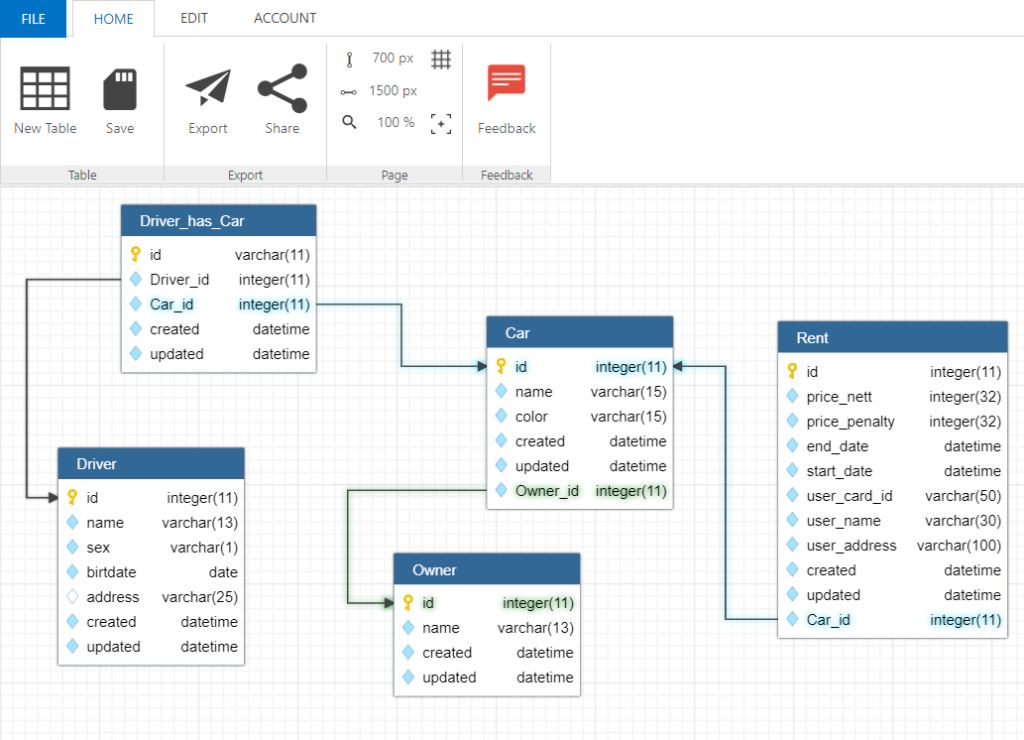
DbDesigner is a web-based tool aimed at providing users with the means to create, manage, and understand database designs effectively. It offers a simple, user-friendly interface that promotes ease of use, making it an excellent tool for straightforward online database schema design and modeling.
Why I Picked DbDesigner:
In determining the best database modeling tools, I chose DbDesigner for its user-friendly interface and intuitive design process, making database schema design and modeling an easier task, even for non-experts. I find DbDesigner to be unique in its simplicity and effectiveness of its design tools, which is why I see it as the best choice for easy online database schema design and modeling.
Standout features & integrations:
DbDesigner offers a plethora of valuable features, such as design sharing, model versioning, and SQL exporting. These features are highly beneficial for collaboration and version control. It integrates well with popular databases, including MySQL, PostgreSQL, Oracle, and SQLite.
Pricing:
DbDesigner's pricing starts from $14/user/month.
Pros:
- User-friendly interface makes it easy for non-experts
- Supports design sharing for improved collaboration
- Offers model versioning for better control
Cons:
- Advanced features are on higher-priced plans
- Some users may find the user interface too simplistic
- Limited offline capabilities due to its online nature
Other Noteworthy Database Design Tools
Below is a list of additional Database Design Tools that I shortlisted but did not make it to the top 12. Definitely worth checking them out.
- SQLDBM - Good for visual design of SQL and NoSQL databases
- RazorSQL - Good for diverse database query, editing, and management capabilities
- Dataedo - Good for comprehensive data documentation and governance
- DbVisualizer - Good for broad cross-database platform compatibility
- QuickDBD - Good for fast and simple database diagram creation
- ERBuilder - Good for detailed entity relationship modeling
- Valentina Studio - Good for managing Valentina DB, MySQL, PostgreSQL, SQLite databases
Selection Criteria for Choosing Database Design Tools
In the pursuit of identifying the best data modeling tools, I've evaluated dozens of them. The goal was to find software that not only offers broad functionalities but also possesses unique features and maintains a user-friendly interface.
Core Functionality
The chosen tools should allow you to:
- Create, edit, and manage database schemas
- Generate SQL scripts
- Reverse engineer existing databases
- Validate models with domain rules
- Compare model and database
Key Features
The key features that stood out during the evaluation and research include:
- Visual Design Interface: An interface that allows you to visually create and edit database elements such as tables, relationships, and views.
- Cross-database Support: Support for multiple database systems such as MySQL, SQL Server, Oracle, PostgreSQL, etc.
- Model Versioning: Ability to track changes and version history of your database models.
- Collaboration: Capabilities for team members to work together on the same model, preferably with controls on access and editing.
- Export and Import Capabilities: Ability to import database structures from SQL scripts and export models to various formats such as SQL, PDF, HTML, etc.
Usability
The usability of data modeling tools is pivotal in making the complex process of database design simpler and more manageable:
- Intuitive Interface: The software should have a well-structured and intuitive interface that aids in easy navigation and understanding of the functionalities.
- Learning Curve: Given the complexity of the task, the tool should be easy to pick up for both beginners and experienced database designers.
- Robust Customer Support: A responsive and knowledgeable customer support team is key for solving any challenges users might encounter.
- Documentation and Community: Comprehensive user guides, tutorials, and a supportive user community can significantly enhance the learning and usage experience.
Most Common Questions Regarding Database Design Tool
What are the benefits of using database design tools?
Database design tools offer numerous benefits that streamline and optimize the process of database modeling and management:
- Simplification of complex tasks: These tools provide a visual interface that simplifies the complex task of creating and editing database elements.
- Improved accuracy: Automated validation and error checks help reduce errors in the database design.
- Increased efficiency: Design tools often provide features such as drag-and-drop, templates, and quick edits that save time and effort.
- Collaboration: Most tools allow for team collaboration, facilitating shared access and editing of models.
- Better documentation: These tools often include features to document the design process, which is beneficial for team communication and future reference.
How much do database design tools cost?
The cost of database design tools can vary significantly, depending on the features, number of users, and the specific requirements of the organization. Some tools operate on a subscription model, with monthly or annual payments, while others might require a one-time licensing fee.
What are the pricing models of database design tools?
Most database design tools follow a subscription-based pricing model where you pay a recurring fee, typically on a monthly or annual basis. This fee may vary based on the number of users, the level of customer support, and the features included. Some tools offer tiered plans, with each higher tier offering additional features. Other tools might require a one-time purchase or licensing fee.
What is the typical range of pricing for these tools?
Database design tools can start as low as $15/user/month and can go up to several hundred dollars per user per month for more advanced and comprehensive solutions.
Which are the cheapest and most expensive software?
Based on my research, QuickDBD and DbVisualizer are among the cheaper options, while ERBuilder and Dataedo are on the pricier side. Please note that pricing can vary based on the specific features, number of users, and other factors.
Are there any free tool options?
Yes, there are free versions or plans offered by some database design tools. For example, DbVisualizer and SQLDBM provide free plans, although these usually come with limited features compared to their premium versions.
Other Database Tool Reviews
Summary
In conclusion, choosing the best Database Design Tool involves thoughtful evaluation of your specific requirements and circumstances. While there's an array of options available in the market, each has its unique strengths and specifications, making it crucial to understand what you value most in a tool.
Key Takeaways:
- Core Functionality: The primary job of a Database Design Tool is to assist with database design, modeling, and maintenance. Depending on your needs, consider tools that offer capabilities for database model design, schema design, multi-database query, and more.
- Essential Features: Look for key features that will streamline your database design tasks, like user-friendly interfaces, robust integrations, cloud support, and comprehensive documentation capabilities. It's also beneficial to have version control and collaboration features for team-oriented projects.
- Pricing Models: Database Design Tools come in a range of pricing models, with costs varying based on factors like the number of users, database size, and added features. Consider tools that offer flexible pricing options to suit your budget without compromising the quality of service.
What Do You Think?
I hope this guide assists you in choosing the right Database Design Tool that best suits your requirements. However, the technology space is constantly evolving, and new tools emerge regularly. If you've found or have experience with a tool that you think should be on this list, please don't hesitate to share it with me.
Your suggestions will not only help me improve this guide but also aid others in their search for the perfect Database Design Tool.
